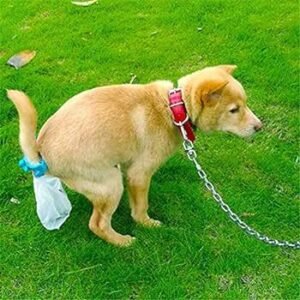Introduction: Pet harnesses have become an essential accessory for any pet owner who wants to ensure the safety and comfort of their furry friend during walks, hikes, or any outdoor adventure. Gone are the days of relying solely on collars, which can cause strain on a pet’s neck and even lead to injuries. Harnesses distribute the pressure more evenly across a pet’s body, reducing the risk of injury and providing better control for the owner. In this guide, we’ll explore everything you need to know about pet harnesses, from choosing the right one for your pet to tips on proper usage and maintenance.
Choosing the Right Harness: When it comes to selecting a harness for your pet, there are several factors to consider:
- Size: It’s crucial to choose a harness that fits your pet properly. Most harnesses come in various sizes, so measure your pet’s chest and neck circumference to ensure a snug but not tight fit.
- Material: Harnesses are made from a variety of materials, including nylon, leather, and mesh. Consider your pet’s comfort and the durability of the material when making your selection.
- Style: Harnesses come in different styles, including step-in, overhead, and vest harnesses. Choose one that you and your pet will be comfortable with and that suits your walking routine.
- Features: Some harnesses come with additional features like reflective strips for nighttime visibility, padded straps for extra comfort, and handles for better control.
Safety Considerations: Safety should always be a top priority when choosing and using a pet harness:
- Check for Proper Fit: Ensure that the harness is snug but not too tight. You should be able to fit two fingers between the harness and your pet’s body.
- Inspect Regularly: Check the harness regularly for any signs of wear and tear, such as frayed straps or loose stitching. Replace the harness if it shows any signs of damage.
- Practice Proper Leash Attachment: Always attach the leash to the designated D-ring on the harness. Avoid attaching the leash to any other part of the harness, as this could compromise your pet’s safety.
- Gradual Introduction: If your pet is not used to wearing a harness, introduce it gradually. Start by letting them wear the harness for short periods indoors before taking them outside for walks.
Benefits of Using a Harness: There are numerous benefits to using a harness for your pet:
- Improved Control: Harnesses provide better control over your pet, especially if they tend to pull or lunge during walks.
- Reduced Strain: Unlike collars, which can put pressure on your pet’s neck, harnesses distribute the pressure more evenly across their body, reducing the risk of injury.
- Prevents Escapes: Some pets, particularly small dogs or cats, can slip out of collars. Harnesses provide a more secure fit, reducing the risk of escape.
- Comfort: Many harnesses are designed with padded straps and breathable materials for your pet’s comfort, making them ideal for long walks or hikes.
In conclusion, a pet harness is an essential accessory for any pet owner who wants to ensure their furry friend’s safety, comfort, and control during walks and outdoor adventures. By choosing the right harness, practicing proper usage, and prioritizing safety, you can enjoy many happy and safe adventures with your pet by your side.





